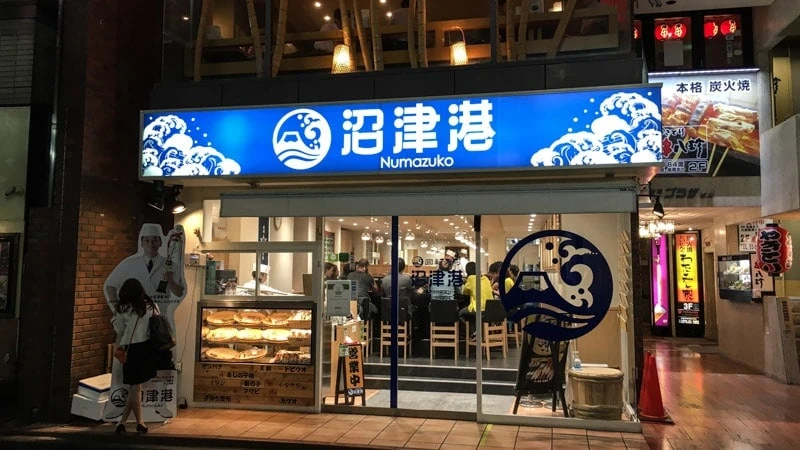
Numazuko Shinjuku Honten, located just outside the east exit of Tokyo’s JR Shinjuku Station, is a popular conveyor belt sushi restaurant (kaiten-zushi). While this restaurant might not be as cheap as nearby Genki Sushi or Uoebi sushi, at Numazuko Shinjuku Honten, the prices are justified by the quality of the seafood.
If you are looking for more information about Tokyo and Japan, I highly recommend you pick up a guidebook such as Lonely Planet Best of Tokyo 2020
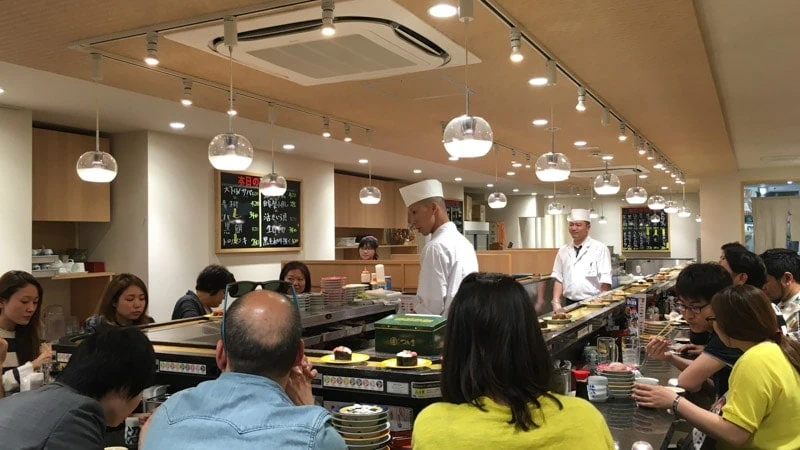
The interior of Numazuko Shinjuku Honten was basic but bright. At the center of the restaurant, chefs dressed in white were preparing custom ordered plates of sushi.
Wrapping around the kitchen was a rectangular counter. The conveyor belt, with plates rotating clockwise around the restaurant, followed the counter.
What I loved about Numazuko Shinjuku Honten was how casual it was. Nothing too fancy. It was quiet with just the sound of the chefs preparing food. The focus was on the quality of the food over the ambiance of the restaurant.
Table of Contents
Numazuko Shinjuku Honten Menu
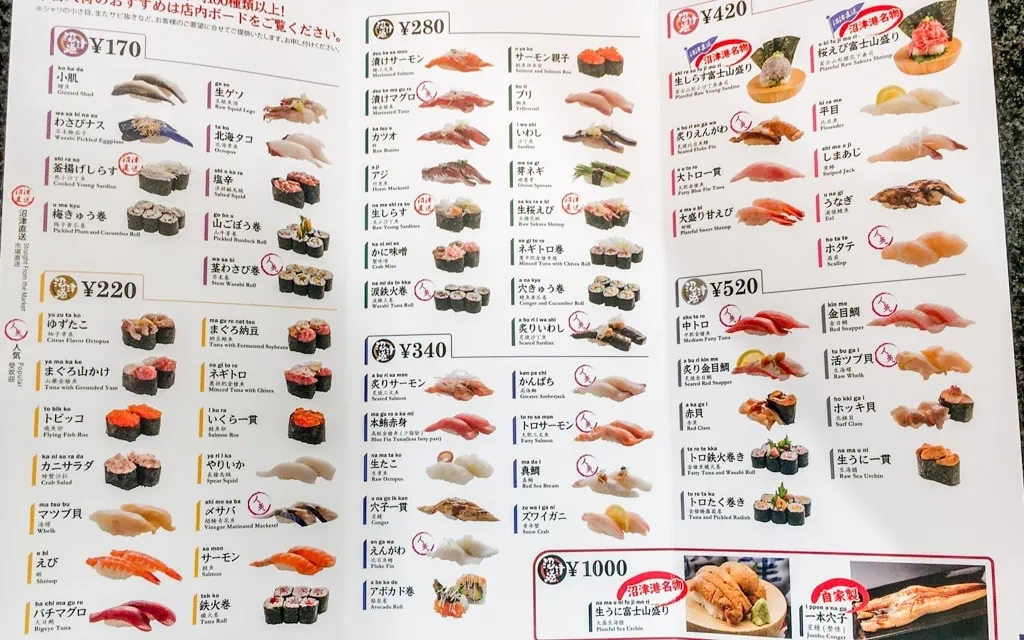
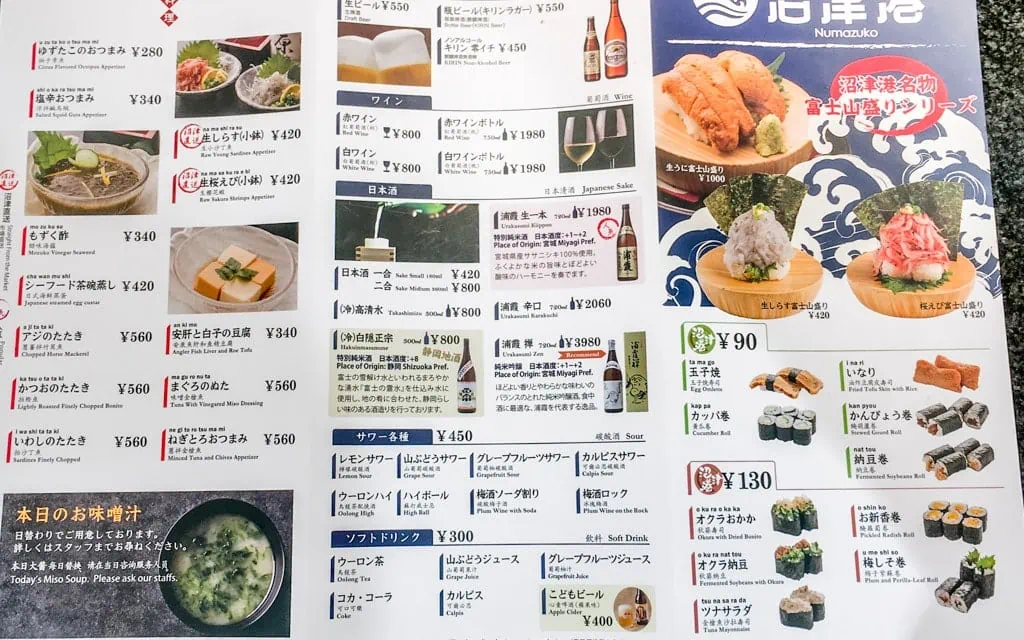
The menu at Numazuko Shinjuku Honten had all your traditional sushi choices found in sushi joints across Japan. There were also some more unusual options including raw young sardines.
I noticed that many items found on the menu were not found on the convener belt. In this situation, if you can’t find your desired choice, just ask one of the servers standing around to put in a special order with the chefs. After a few minutes, your freshly prepared dish will be ready and placed in front of you.
Even if your choice is available on the conveyor belt, it’s not uncommon to order the same plate made fresh by a chef.
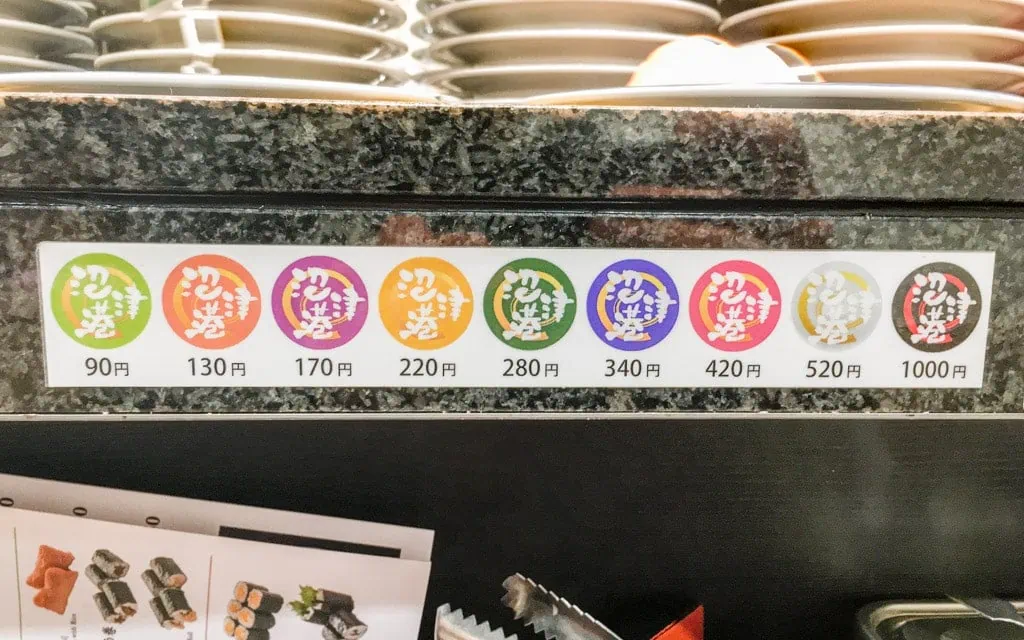
Plates at Numazuko Shinjuku Honten started at 90 yen (or about $0.82) and went all the way up to 1000 yen (or about $9.09).
The color of each plate corresponded to a certain price. For example, the pink plate was priced at 420 yen while the black plate was priced at 1000 yen. Charts were posted all around the restaurant. You can use the chart to determine the price of each plate of sushi.
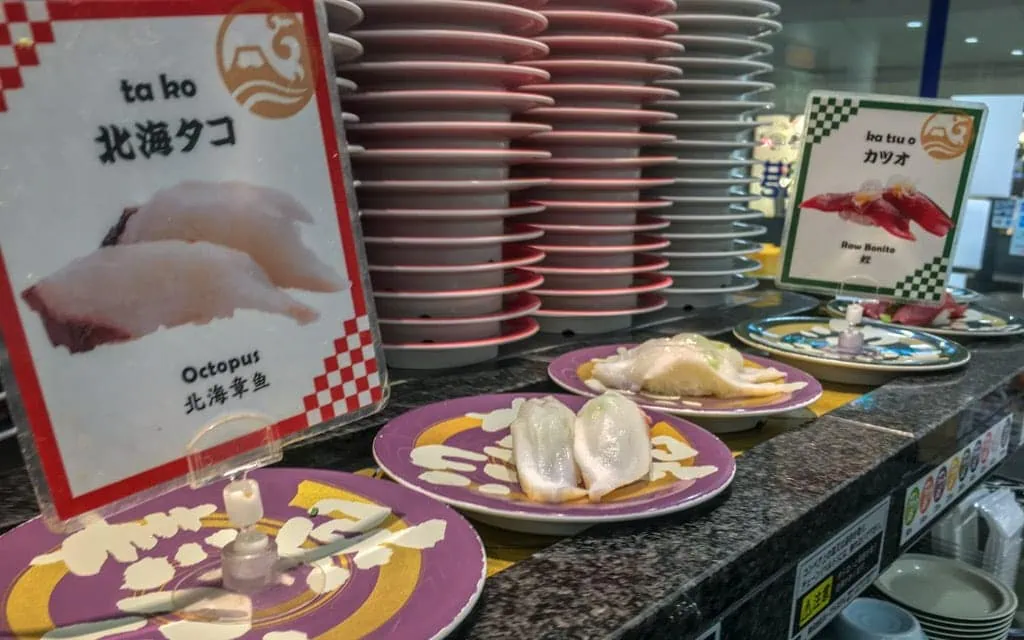
Signs in both Japanese and English, along with a photo, were placed at the front of each set of plates on the conveyor belt. This made deciding what to select much easier. This was especially true for those who do not speak Japanese or have trouble identifying certain types of fish.
Scallops
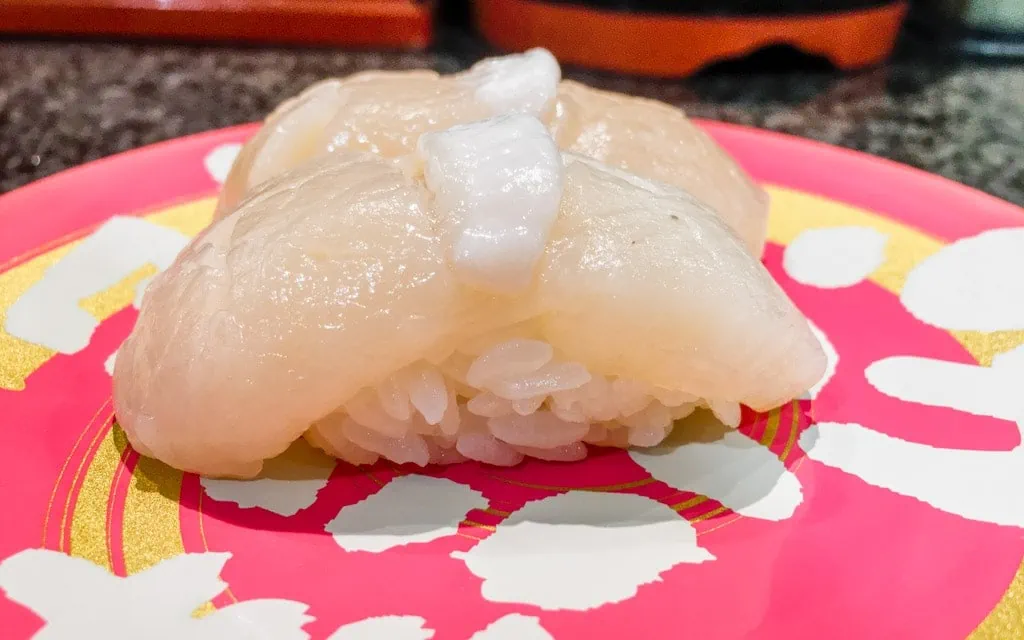
First up were the Scallops (420 yen or about $3.82).
Scallops are at the top of my list of favorite types of sushi to order while in Japan. If you have never tried them before, then you are missing out. They are that delicious.
Each meaty scallop was wonderfully fresh with just a hint of sweetness and saltiness. The flavors were balanced by a touch of wasabi. The wasabi added a small kick of heat to each bite.
These scallops were tender like butter and just melted in my mouth. They were just perfect.
Yellowtail
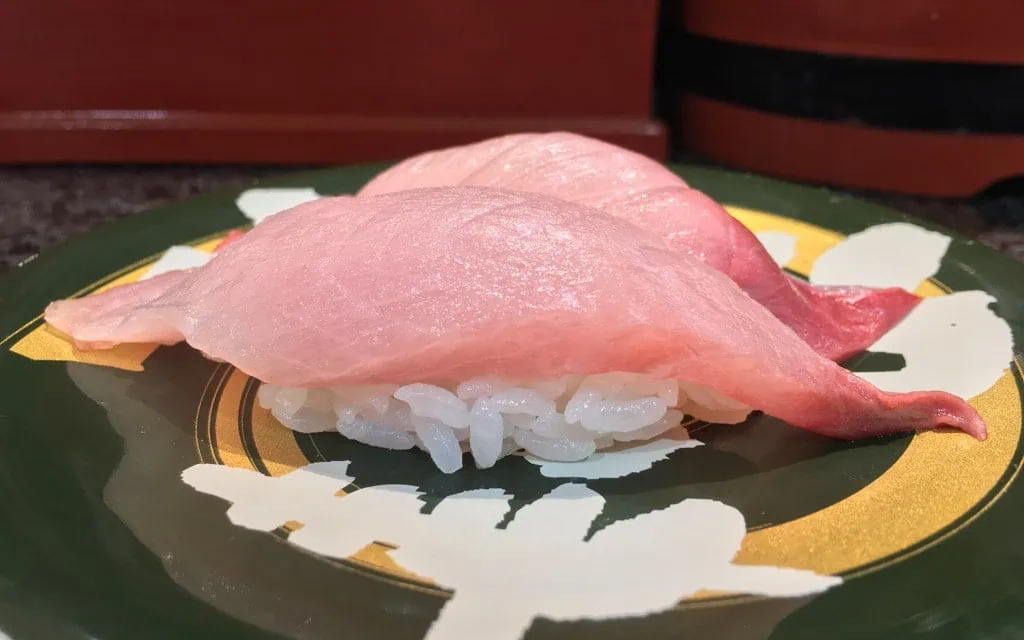
Yellowtail (280 yen or about $2.55) is one of those types of sushi that can vary in quality from restaurant to restaurant. For the price, I really wasn’t expecting a whole lot.
The one thing that caught my attention was the color of the yellowtail. It was beautiful. I was hoping it tasted as great as it looked.
And, it did. The large pieces of yellowtail were meaty without any stringy or fatty bits. I wouldn’t say that the yellowtail melted in my mouth but it was tender with a nice bite.
If you want more flavor in your sushi, you might be disappointed. Each piece had only a hint of salty flavors. The fish was so fresh that I almost tasted nothing.
Raw Bonito
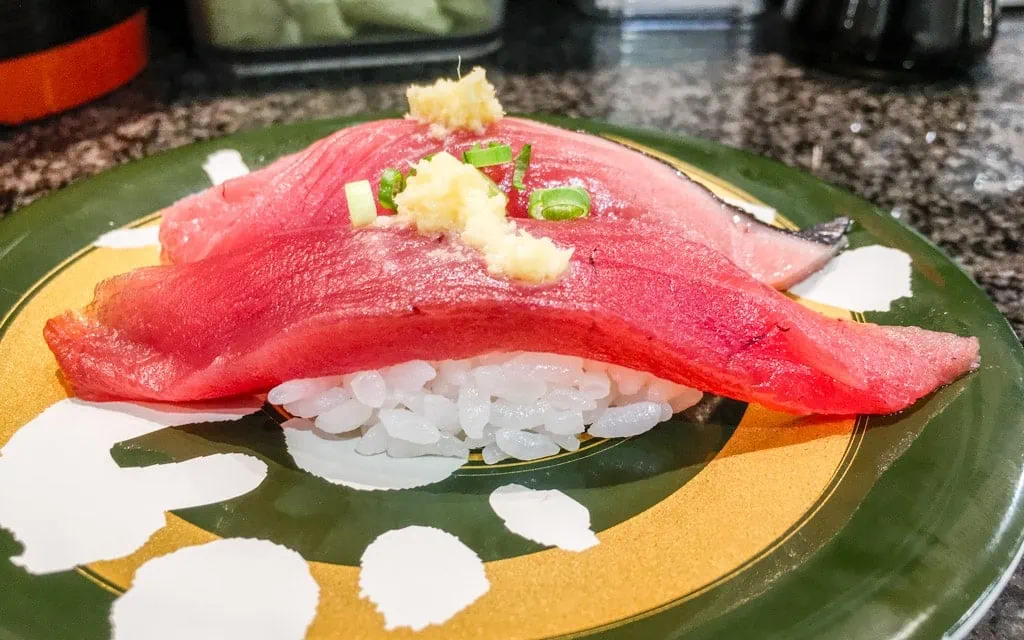
When I first saw the dark, ruby red color of the Raw Bonito (280 yen or about $2.55) , I immediately thought it was tuna.
Though similar in color, the bonito had a strong, briny flavor. The pungent flavor wasn’t surprising to me as I remembered that dashi, the salty umami fish broth common in many Japanese dishes, was made with dried bonito flakes.
Topping the fish were green onions and grated ginger. These toppings kept the stronger flavors of the fish in check and added some texture to each bite.
Seared Salmon
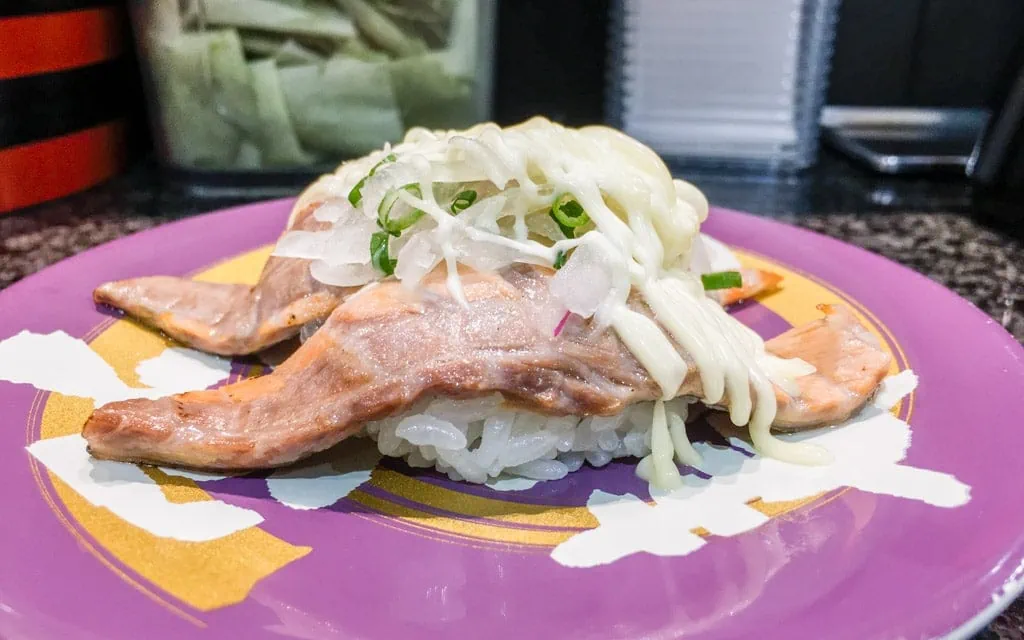
I was surprised how flaky and tender the Seared Salmon (170 yen or about $1.55) was. It wasn’t completely raw but not overdone either. Just the right doneness.
The fish was cooked lightly, being seared only on one side for a moment. The sear added a peppery and smoky charred flavor to the otherwise delicate flavor profile of the salmon.
Topping the salmon was a mixture of sliced white onions, green onions, diced red onions, and a drizzle of mayonnaise.
I enjoyed the texture of onions, which added a crunchy bite to the otherwise soft pieces of salmon. While mayonnaise sounds odd on seafood, it is quite common in Japan. The mayonnaise, while rich and creamy, drowned out the fresh flavors of the fish.
Octopus
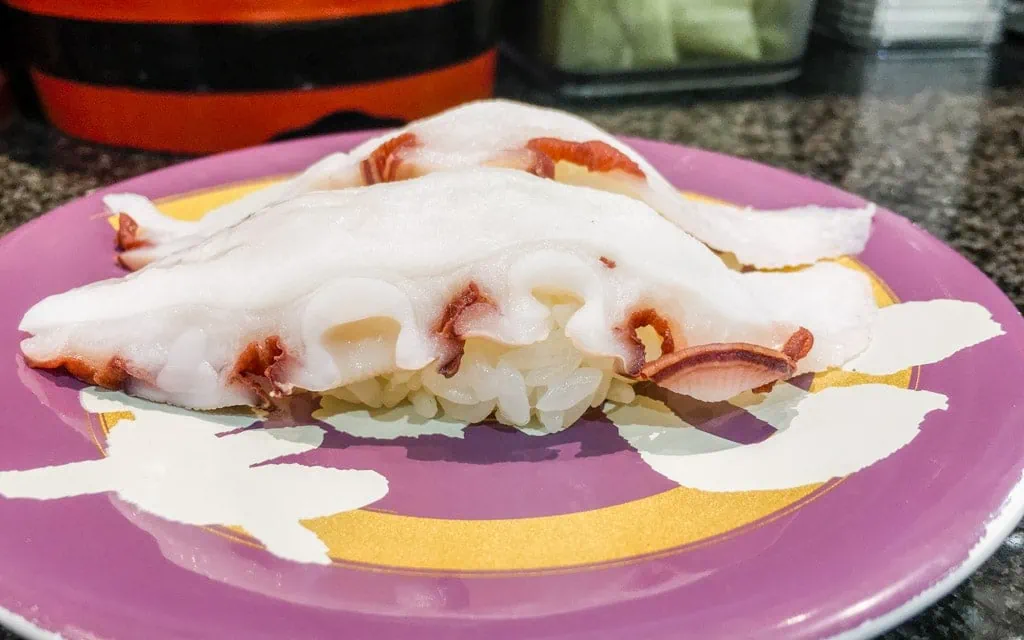
While fresh and bright, my least favorite item ordered on my visit was by far the Octopus (170 yen or about $1.55).
A few years ago in Seoul, Korea, I was pressured into trying live octopus. I actually enjoyed it. While it didn’t taste like much, the octopus was a lot more tender than I was expecting.
Maybe I just have weak teeth, but the octopus at Numazuko Shinjuku Honten was a big letdown. Saying the octopus was chewy was an understatement. It took me a few minutes, along with my hands, to take down one piece of octopus. If you like chewy foods, you may enjoy it, but this one was not for me.
I just hope the chef didn’t notice me destroying a beautiful piece of octopus with my hands and teeth.
Soy Marinated Tuna
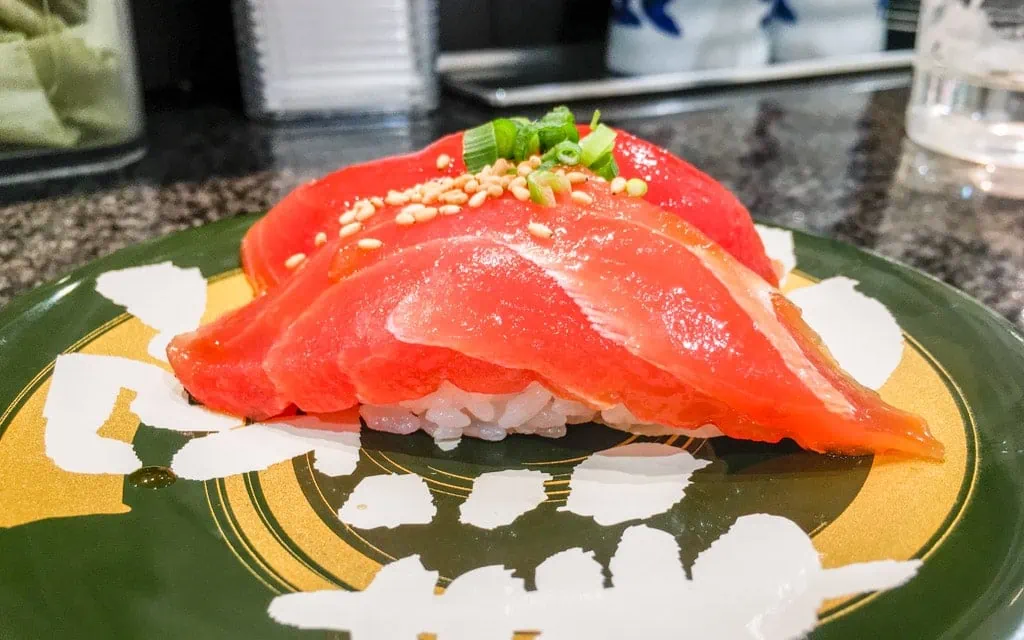
The Soy Marinated Tuna (280 yen or about $2.55) was beautiful and bright. Each piece of tuna was glowing in the lights. It was so beautiful that I almost didn’t want to eat it, but then I remembered how much I loved tuna.
Each thick piece of tuna was soft and tender except for one skinny piece of fat which was running through each piece of tuna. The fat was impossible to bite through.
The soy sauce marinade added a salty, sweet, umami component to the fish. I really enjoyed it.
Topping off the tuna were sesame seeds and green onions. While both added texture, the sesame seeds added a nice earthy flavor that complemented the soy sauce.
Shrimp
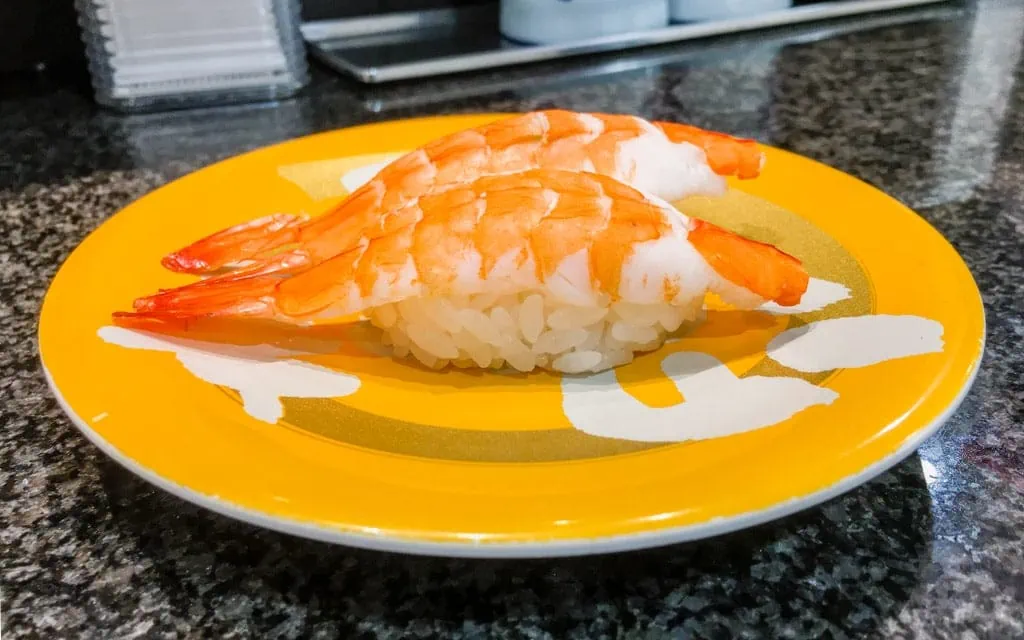
The most basic plate I ordered was the Shrimp (220 yen or about $2.00).
I usually enjoy shrimp, but I found this plate to be boring, both in texture and flavor. While the shrimp was thick, it was on the dry side. Maybe it was because it was going around and around on the conveyor belt before I impulsively grabbed it.
Shrimp should be fresh, almost moist. The pieces should be salty finished off by a hint of sweetness. I wasn’t getting any of this. The flavors of these shrimp seemed missing. I wasn’t tasting anything.
Eel
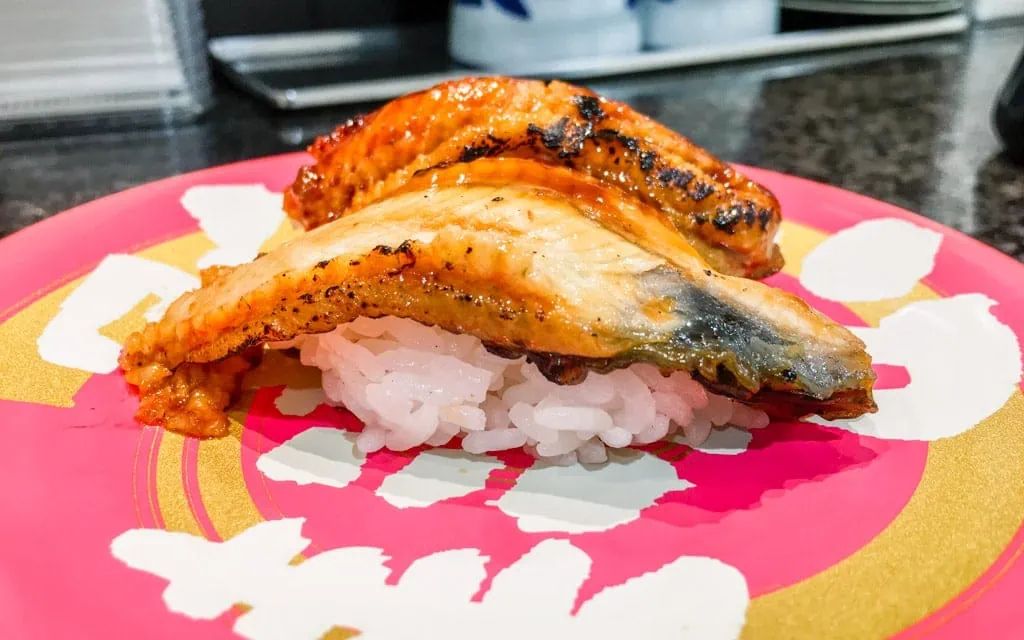
Next up was the Eel (420 yen or about $3.82). This plate was beautiful with the eel glistening under the lights.
While the eel was fully cooked, it was still moist and flaky. It was so tender that it almost fell apart when I picked it up with my chopsticks.
Each piece of eel was seared until charred and brown on the outside. This sear gave the eel a wonderful smoky, aromatic flavor. Drizzled over the eel was a salty and sweet sauce that complemented the smoky flavors from the sear.
Egg
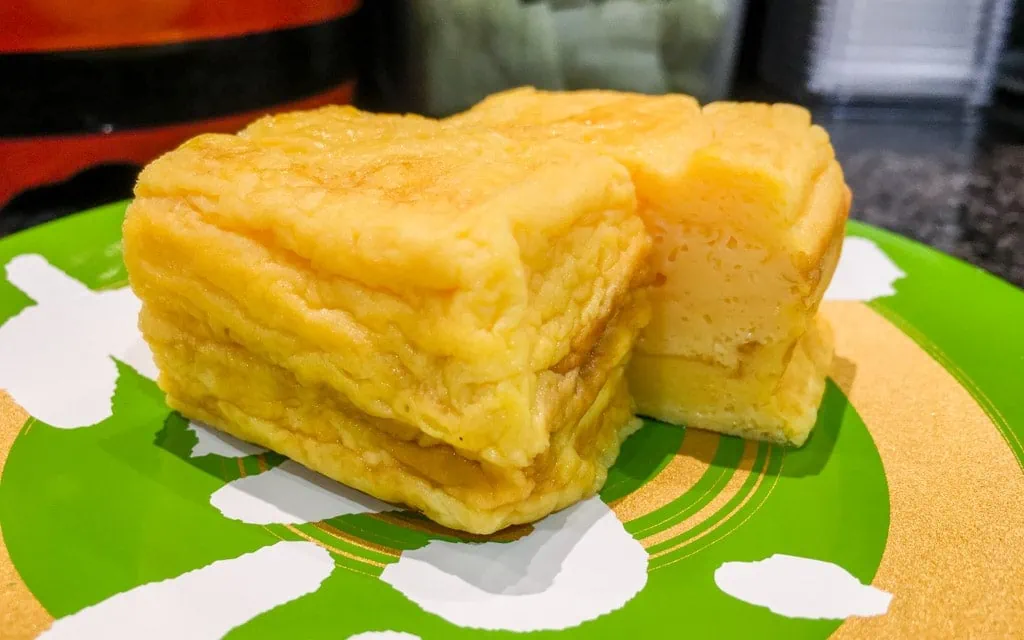
I finished off my meal with the Egg or Japanese omelette (90 yen or about $0.82). In Japan, this plate is also known as tamago or tamagoyaki.
This was the cheapest plate of sushi I had this night. While inexpensive and basic, the egg was delicious.
The egg was thick and dense as if it were layered like a cake. Even better was the flavor. The omelette had a salty, sweet, umami flavor. There might have been some soy sauce mixed in before the egg was cooked.
For something so simple, I am always amazed by how well the Japanese prepare eggs.
Hours
Monday - Sunday: 11:00 AM - 10:30 PM
Address
Shinjuku 3-34-16, Ikeda Plaza Building 1F, Tokyo, Japan 160-0022
GPS Coordinates: 35.690389,139.703145
Map
Last Updated on January 23, 2024
Related Posts